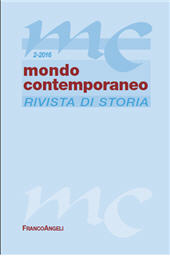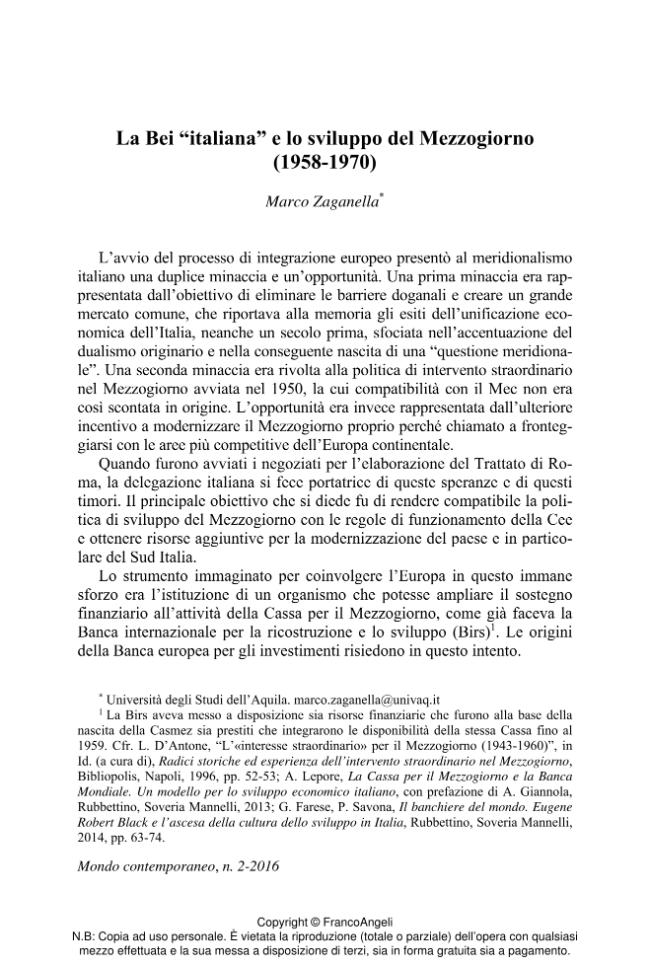La Bei italiana e lo sviluppo del Mezzogiorno (1958-1970)
61-86 p.
The beginning of European integration represented for the government's policy in favor of Southern Italy both a dual threat and an opportunity. The first threat was given by the removal of trade barriers and the creation of a large common market, a process that recalled the early economic unification of the country, which had ultimately emphasized the economic differences between Northern and Southern Italy. The second threat addressed the extraordinary intervention policy launched by Italy's government in 1950: it was arguable, in fact, whether this policy would remain possible in light of the new Common Market rules. A new opportunity, instead, was given by the increased incentive to modernize the South, since this was expected to become competitive with the most developed areas of continental Europe. To address these hopes and concerns, the Italian delegation charged to negotiate the Treaty of Rome proposed to create an instrument able to allocate additional economic resources in favor of disadvantaged are
as. The origins of the European Investment Bank, therefore, lay in this effort to support the South of Italy. This country paid close attention to the work of the EIB from 1958 to 1970, at the time when this institution was chaired by Pietro Campilli and Paride Formentini. [Publisher's Text].
Fait partie de
Mondo contemporaneo : rivista di storia : 2, 2016-
Articles du même numéro (disponibles individuellement)
-
Informations
Code DOI : 10.3280/MON2016-002003
ISSN: 1972-4853
DISCIPLINES
KEYWORDS
- Banca europea degli investimenti (Bei), Cee, Mec, Mezzogiorno, Pietro Campilli, Paride Formentini
- European Investment Bank, European Economic Community, Common Market, Southern Italy, Pietro Campilli, Paride Formentini



